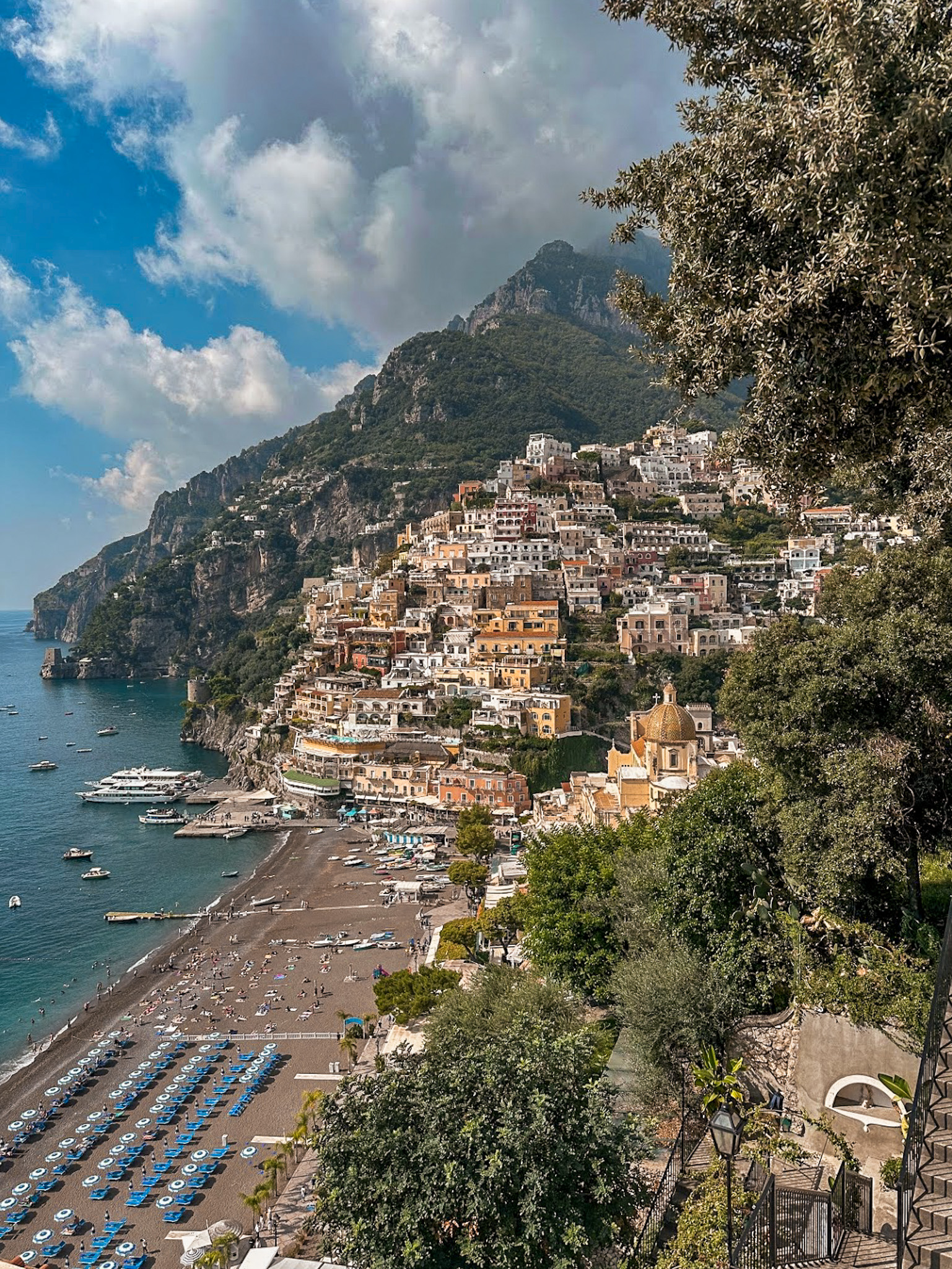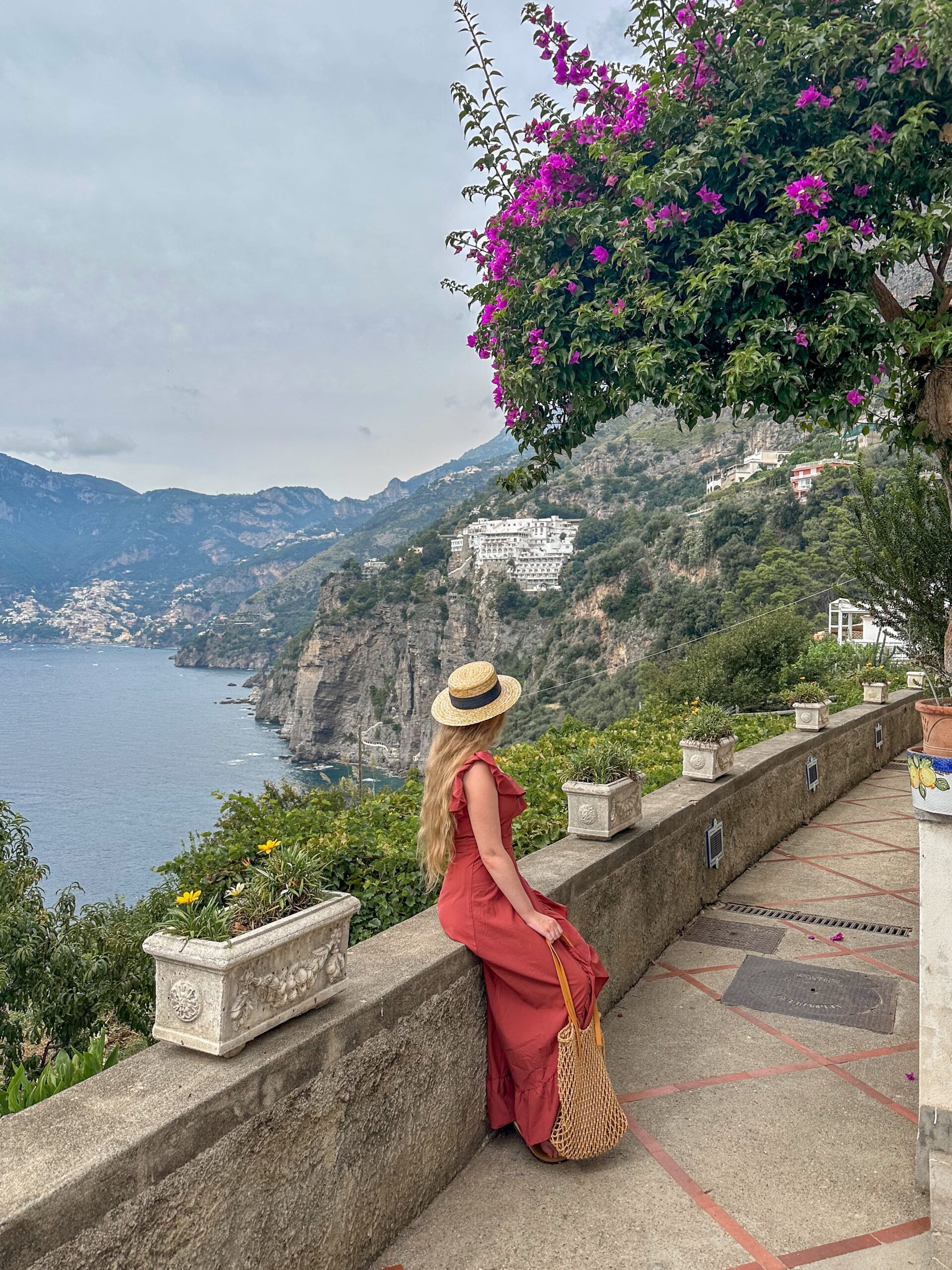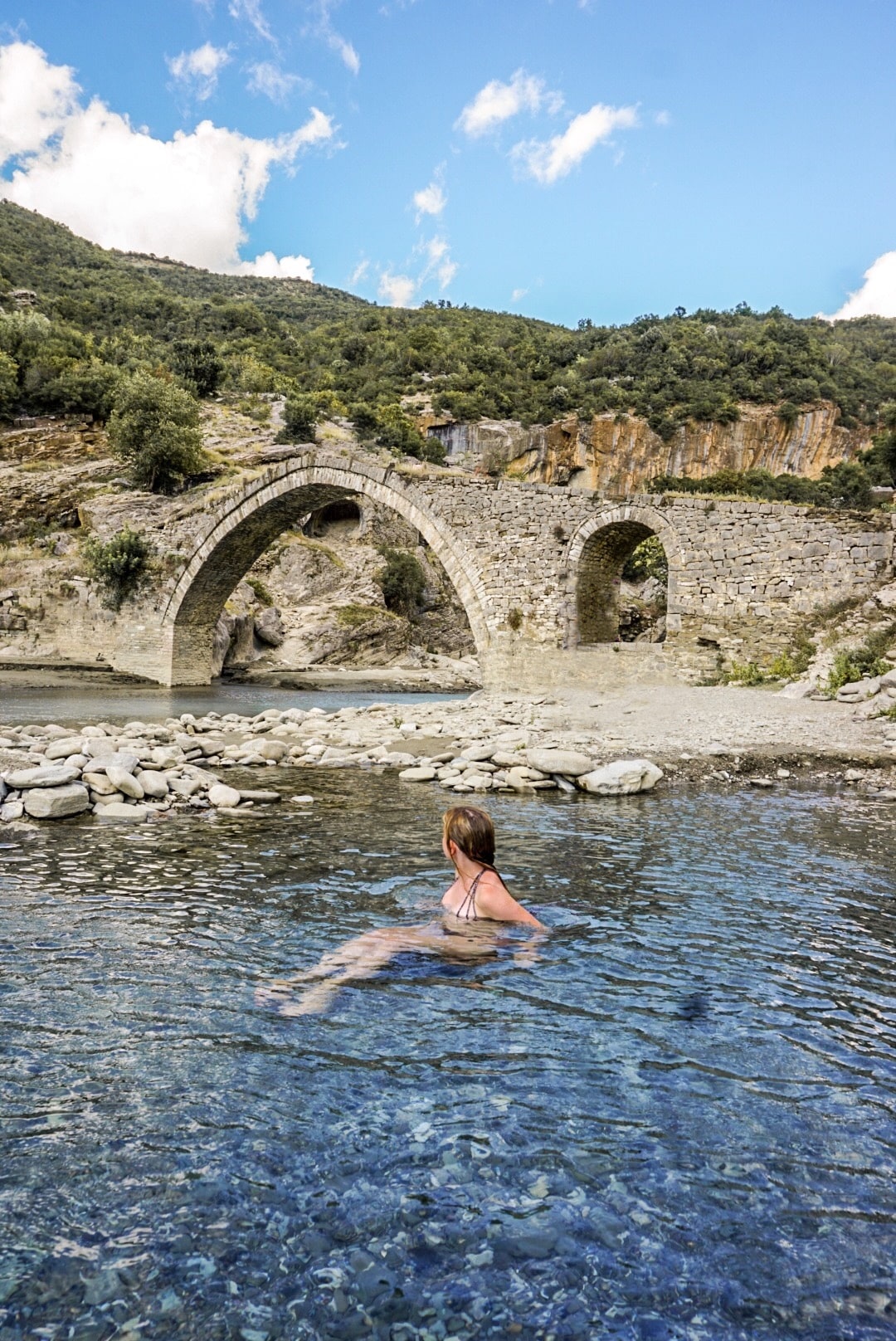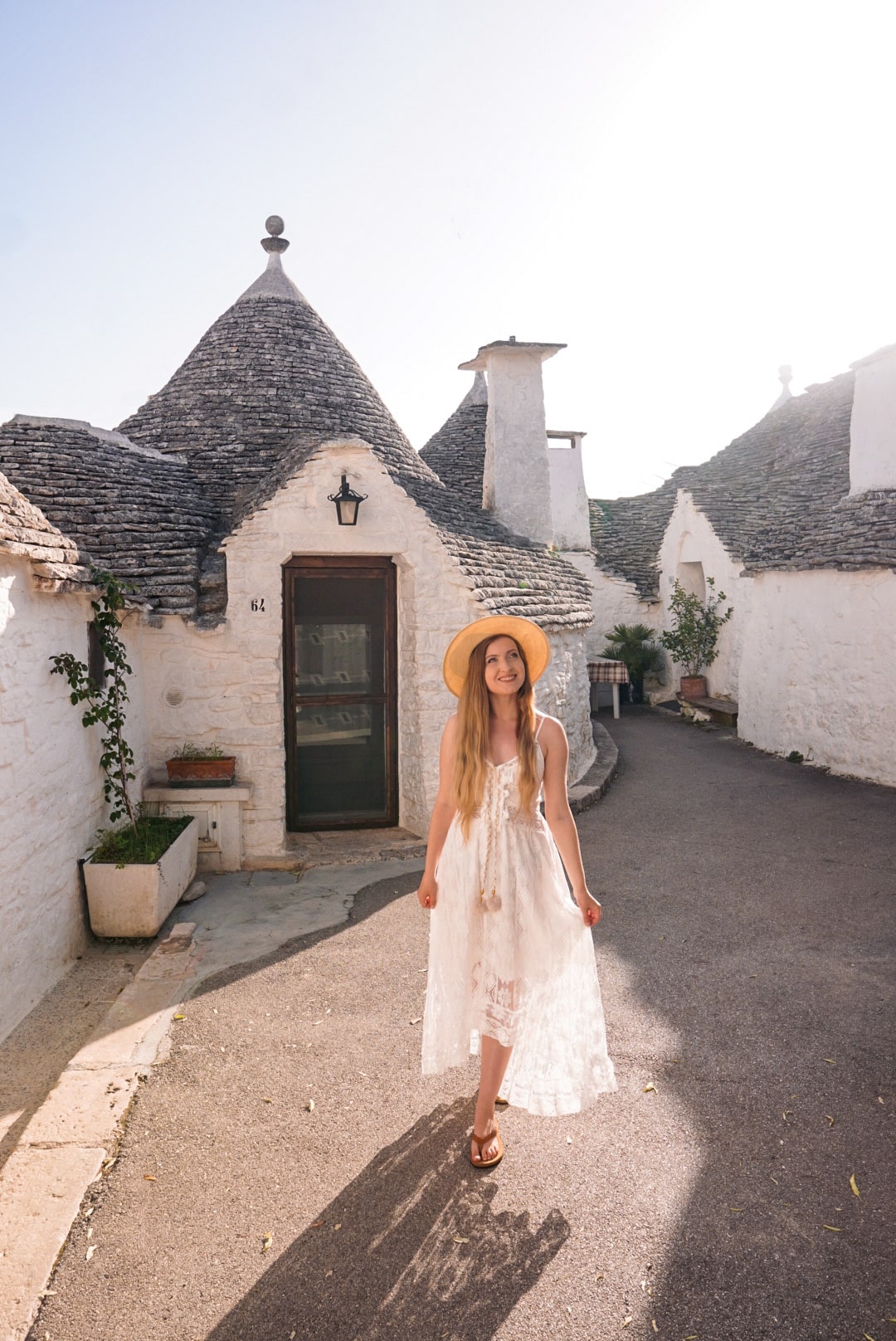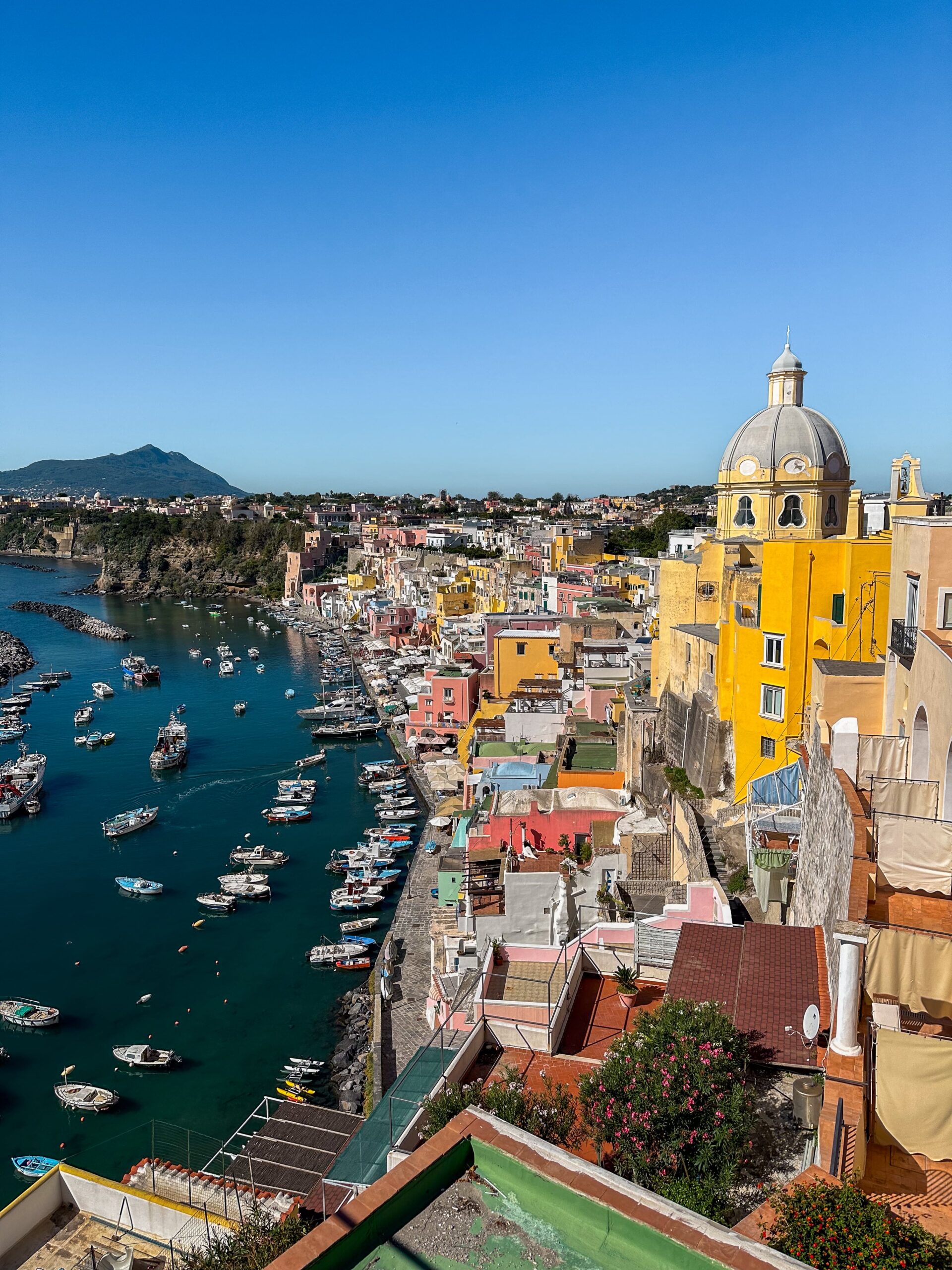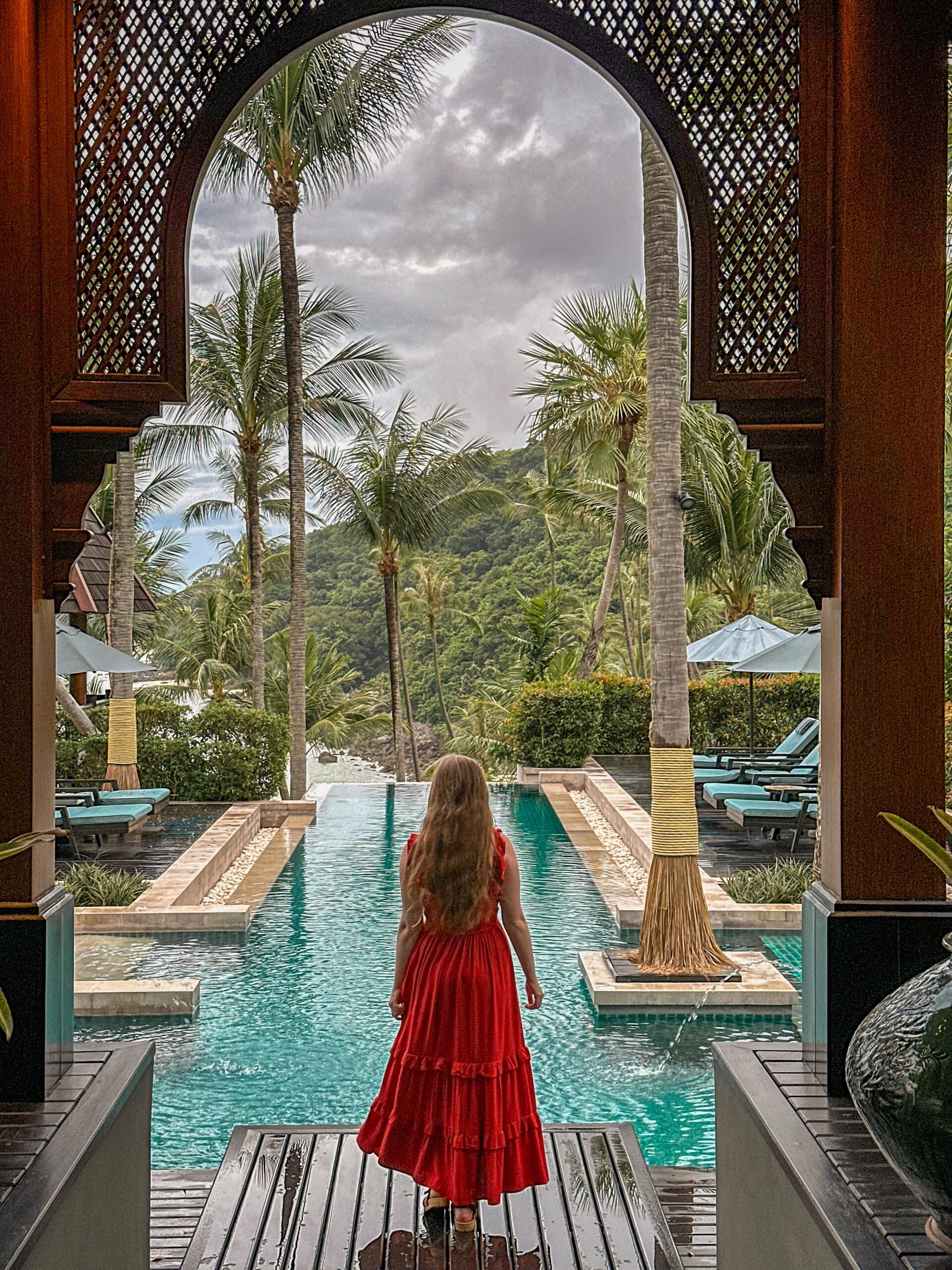.Norway is known for being one of the most expensive countries in the WORLD. Its…

How to Visit Iceland on a Budget: The Ultimate Budget Guide to Iceland
April 28, 2025
Iceland is one of the most breathtaking places that you’ll ever visit, but, unfortunately, along with its beauty come high prices. Iceland is one of the most expensive countries in the world, and travel expenses on your trip to the beautiful island nation can add up fast. With that being said, it is still very possible to visit Iceland on a budget – you just have to do a little planning beforehand to ensure that you come prepared and avoid any sticker shock.
Whether you’re road-tripping the Ring Road or basing yourself in Reykjavik for a few days, this guide will show you exactly how to make your money go as far as possible in Iceland!
- Things to Consider Before Visiting Iceland on a Budget
- Currency in Iceland + Conversion Rate
- What time of year is best to visit Iceland on a budget?
- Things to Avoid When Visiting Iceland on a Budget
- Where to Stay in Iceland on a Budget
- Getting Around Iceland on a Budget
- Things to Do in Iceland on a Budget
- Budget-Friendly Hot Springs & Cheaper Alternatives to the Blue Lagoon
- Food in Iceland on a Budget
- Things Worth Splurging on When Visiting Iceland
- Conclusion
Things to Consider Before Visiting Iceland on a Budget

Currency in Iceland + Conversion Rate
Iceland uses the Icelandic Króna (ISK). As of 2025, the conversion rates are approximately:
- 1 USD = 140 ISK
- 1 EUR = 150 ISK
Exchange rates can fluctuate, so it’s a good idea to research the current conversion rate before you travel. Credit cards are widely accepted everywhere (even at remote gas pumps!), so you likely won’t need to worry about carrying much cash. It’s always a good idea to have some on hand, just in case, but don’t stress out about immediately taking out hundreds of dollars’ worth of Króna upon your arrival.
What time of year is best to visit Iceland on a budget?
The time of year you visit Iceland can significantly impact your expenses. You can still manage a budget trip to Iceland at any time of year, but your budget will definitely go the furthest if you avoid visiting during peak season.
Peak season in Iceland lasts from June through August, when there are larger crowds and higher prices for accommodations and car rentals. The perks of peak season are the nearly 24 hours of daylight and beautiful weather, so it might still be worth it for some people to visit during this time. If your heart is set on visiting Iceland in the summer months, you’ll want to book accommodation at least a few months in advance to ensure that you get the best prices. The earlier you book, the better.
Shoulder season in Iceland is May & September, and offers a great balance for most travelers, with fewer crowds, lower prices, and decent weather. I actually experienced more sunny days when I visited Iceland in September than when I visited in June, so keep in mind that the weather can really vary, as well. September offers the chance for you to spot the northern lights, which you won’t get the chance to experience in the summertime.
Off season in Iceland lasts from October through April. It’s the cheapest time of year to visit Iceland, with much lower accommodation and rental car prices. It’s also the best time of year to see the northern lights, especially during the winter months! The only downside is that winter brings freezing weather and limited daylight hours (with only 4 hours of daylight in December/early January). If lack of daylight is a concern, keep in mind that February brings nearly 9 hours of daylight, March nearly 12 hours, and April 15 hours!
Things to Avoid When Visiting Iceland on a Budget

- Don’t wait until the last minute to book accommodation: Affordable, well-rated places get booked up fast (especially during peak season), so book as early as possible for the best deals on the best accommodations. With that being said, if life happens and you end up booking a last-minute trip to Iceland, there will still be some budget options available, but you won’t have nearly as many options and affordable places might be a little more out of the way from popular attractions (which is fine if you don’t mind driving, but gas can add up a lot during your trip, too, so keep this in mind).
- Don’t book your rental car on-site or too close to your trip: Prices for car rentals in Iceland are significantly lower when booked in advance, and just like with accommodation, the cheapest, best-rated options will get booked out the earliest.
- Don’t dine out for every meal: Restaurants in Iceland can be pretty pricey, and eating at restaurants can quickly drain your budget. Instead, save some money and get food at the grocery store or even a gas station (more on this later).
- Don’t speed to avoid tickets: Iceland has speed cameras all over the country, and the fines can be steep. So, don’t be in a rush when driving the ring road, take your time and go the speed limit – the views are too good to rush through, anyway!
Where to Stay in Iceland on a Budget
Iceland doesn’t necessarily have an abundance of budget hotels, but you can still find affordable places to stay if you know where to look! Here are some of the best budget-friendly accommodation options to look for in Iceland:
Guesthouses

Guesthouses are common throughout the country and are much more budget-friendly than hotels. Many will have private bedrooms with shared bathrooms, which will significantly cut down the price. I suggest using Booking.com to reserve guesthouses, as it has a ton of different options to choose from.
Hostels

There are some great hostels in Iceland, and while they are definitely more expensive than hostels in mainland Europe, hostels in Iceland are still much more affordable than hotels and guest houses. Hostels in Iceland are especially popular in Reykjavik and along the Ring Road in some of the popular tourist hotspots like Vik, Husavik, and Akureyri. You can find fantastic hostel options on Booking.com and Hostel World!
Camping

Camping is one of the most affordable ways to travel around Iceland, especially in the summer months when campgrounds are open and the weather is relatively mild. You’ll find campsites all over the country – many with bathroom facilities, showers, and kitchen areas. Just make sure to camp at designated sites, as wild camping is no longer legal unless you have permission from the landowner. You can either bring your own camping gear or rent it in Reykjavik.
Camper Van

Renting a camper van is a very popular way for tourists to experience Iceland. It combines your accommodation and transportation into one, so you’ll ultimately save a lot of money. Plus, it gives you the freedom to explore Iceland at your own pace without worrying about or relying on hotels or hostels. Many companies offer camper van rentals with sleeping space, heating, and basic cooking equipment. Just like tent camping, you’ll still need to park overnight at designated campsites, but the flexibility and savings make it totally worth it. Like I said, renting a camper van is a very popular way to experience Iceland, so booking ahead of time will be crucial, especially for a summer trip. Go Car Rental Iceland offers a fleet of camper vans at an affordable price.
Getting Around Iceland on a Budget
Transportation is one of the biggest expenses in Iceland, but with a little planning, you can keep the price manageable. Here are the main ways of getting around Iceland on a budget:
Rental Car

A rental car gives you ultimate freedom to explore Iceland at your own pace. As I previously mentioned, you’ll want to book your car rental in advance for the best pricing options. Go Car Rental Iceland is a great rental company with reasonable pricing and fantastic customer service. To save some money, opt for a sedan/2WD vehicle in the summer unless you plan on driving F-roads (gravel mountain roads). The main Ring Road is extremely well maintained, so you will have no problems with a sedan unless you are visiting in the wintertime, where snowstorms could occur. That being said, 4WD vehicles will be more affordable to rent in off-season, so it won’t affect your budget too much.
Hitchhiking

Hitchhiking is very common in Iceland, and you’ll see locals and tourists alike on the side of the road with their thumbs out. Iceland is one of the safest countries in the world, so hitchhiking is relatively safe – but only do it if you are 100% comfortable, and you are willing to spend time waiting (especially in more remote areas). Make sure to always have some food and water on hand if you choose to do this option, and be sure to exercise caution.
Public Transport

Public transportation in Iceland is pretty limited outside of Reykjavik, but it works well within the city. The Strætó buses are clean, safe, and reliable, and are a great method of transportation within Reykjavik. However, if you want to see more of the country outside of Reykjavik, public transport options are, unfortunately, extremely limited. Your best option would be to base yourself in Reykjavik and go on guided tours that leave from the city, however, these tours can be pricey and will add up to much more than if you were to just hire a rental car and transport yourself.
Gas Prices in Iceland
Fuel in Iceland is expensive; expect to pay over $8 USD per gallon. In order to minimize your gas expenses, try to rent a fuel-efficient car, use apps like Gasvaktin to find the cheapest fuel stations, and try to find accommodation or camp sites close to the attractions that you plan to visit, ensuring that you aren’t too far out of the way. Miles can rack up quickly in Iceland, and you don’t want them eating through your budget!
Things to Do in Iceland on a Budget
The good news is that there are loads of free things to do in Iceland, as the majority of the natural landmarks, hiking trails, and national parks are completely free to experience. A few places might have a parking fee, which is something you should definitely budget for. You can expect to pay between 600-1200 kr for parking in Iceland. Otherwise, I can promise you won’t run out of free and cheap things to do while exploring the country!
Tip: Download the Parka App or Easy Park to easily reserve and pay for a parking space.
Visit Iceland’s National Parks

Iceland is home to three stunning national parks: Þingvellir (Thingvellir), Vatnajökull, and Snæfellsjökull. Each national park is completely different from one another and they are all worth visiting if you have the time. Entry to all three parks is free, though you’ll usually need to pay a small fee for parking (generally around 750–1000 ISK or $5–7 USD per car).
Thingvellir National Park

Thingvellir is Iceland’s most popular national park, located along the famous Golden Circle. It is also a UNESCO World Heritage Site and is one of the most historically and geologically significant places in Iceland. It’s where Iceland’s first parliament, the Alþingi, was founded back in 930 AD, and it’s also where you can literally walk between the North American and Eurasian plates, which are visibly pulling apart from each other! Main points of interest in Thingvellir include:
- Almannagjá Rift Valley: A dramatic canyon that formed between the tectonic plates – this is a super cool area to explore and walk around.
- Öxarárfoss Waterfall: A picturesque waterfall set in one of Thingvellir’s canyons.
- Silfra Fissure: The famous snorkeling and diving spot between the continental plates, known for having the clearest water in the world!
- Thingvallavatn Lake: Iceland’s largest natural lake, which offers some absolutely stunning views of the surrounding countryside.
Vatnajökull National Park

This is the largest national park in Europe, covering around 14% of Iceland, and home to the massive Vatnajökull Glacier. You’ll find a wildly diverse range of landscapes here, from ice caves and glacier tongues to volcanoes, waterfalls, and black sand plains. The park is broken into different regions, so you can explore different parts depending on where you are on your road trip. Main points of interest in Vatnajökull include:
- Skaftafell: A preservation area that was once a National park itself, before becoming part of Vatnajökull. An excellent spot for glacier hiking, chasing waterfalls, and exploring scenic trails like the walk to Svartifoss, the famous black basalt column waterfall.
- Jökulsárlón Glacier Lagoon: A picturesque lagoon famous for its abundance of floating icebergs. It’s located just across from Diamond Beach, which is named for the glistening chunks of ice that litter its shores.
- Dettifoss Waterfall: Europe’s most powerful waterfall, which can be found in the northern part of the park, offering incredible viewpoints where you can marvel at its sheer power.
Snæfellsjökull National Park

Located on the Snæfellsnes Peninsula, this is the smallest of Iceland’s three parks, but it packs a lot of natural landmarks into the relatively compact area. The park is centered around Snæfellsjökull, a glacier-capped volcano that’s said to be one of the most mystical places in Iceland (it was also the setting for Jules Verne’s Journey to the Center of the Earth and featured in Game of Thrones). It’s also the only national park in Iceland that stretches to the coastline, so you’ll encounter jaw-dropping sea cliffs, lava fields, and black sand beaches. Main points of interest include:
- Snæfellsjökull Glacier: A picturesque volcano visible on clear days and accessible via guided tours.
- Dritvik Cove: A dramatic coastal cove with jagged lava rocks, black pebbled shores, and a coastal hiking trail. From here, you can hike to Djúpalónssandur Beach, a stunning black sand beach with historic shipwreck remains
- Saxhóll Crater: An easy climb with panoramic views of the Atlantic Ocean and the nearby lava fields from the top.
- Lóndrangar Cliffs: These dramatic basalt sea stacks offer a unique glimpse of Iceland’s cliffside and provide a great place for puffin spotting.
- Vatnshellir Cave: A lava tube cave that can be experienced on a guided cave tour.
Go Hiking
If you’re an avid hiker, you’re in luck – Iceland has absolutely incredible hiking trails and is a dream destination for any hiking enthusiast. Hiking in Iceland is free, you may just need to pay for parking at certain locations. Here are a few of Iceland’s most popular hikes:
Fjaðrárgljúfur Canyon Hike

Fjaðrárgljúfur is one of Iceland’s most stunning canyons, and this hike takes you along the edge of it! The Fjaðrárgljúfur Trail is an easy 2.1 miles out-and-back, with slight elevation and multiple panoramic viewpoints overlooking the dramatic, moss-covered cliffs and the winding river below. It’s just off the Ring Road near Kirkjubæjarklaustur, and is a quick stop that’s an absolute must-see if you are passing by! The trail is a very well-maintained gravel path and takes about an hour to complete.
Stuðlagil Canyon Hike

A hidden gem located in Eastern Iceland, this stunning canyon is known for its otherworldly turquoise river that flows between towering basalt columns. The Stuðlagil Canyon hike is about 6 miles out and back, depending on where you start. The east side viewpoint offers the most iconic view down into the canyon, and if you’re up for a slightly longer walk, you can hike further in to get closer to the water. This hike is best experienced if you plan to visit in summer or early fall when the water is at its most vibrant color.
Landmannalaugar

Located in the Highlands, this area is part of the Fjallabak Nature Reserve and is famous for its rainbow-colored rhyolite mountains, steaming hot springs, and otherworldly landscapes. There are several hikes to choose from here, ranging from short and scenic walks to full-day treks. The Laugahraun Lava Field Loop is a popular 2.9-mile hike (closed in winter), while the Laugavegur Trail is a challenging 33-mile multi-day hike often ranked among the best hikes in the world. This trail takes most hikers 4 days to complete, so it’s definitely for more seasoned backpackers rather than inexperienced hikers.
Fimmvörðuháls Trail

If you’re a serious hiker, Fimmvörðuháls Trail is one of Iceland’s most epic day hikes. It’s a challenging 16-mile out-and-back route that takes you from Skógafoss to Þórsmörk. You’ll pass by 26 waterfalls, volcanic craters, glaciers, and lava fields along the way, and it usually takes 8–10 hours to complete. This trail is best experienced in summer when snow has melted and the trail is fully accessible.
Skaftafellsjökull Glacier Trail

This is a short but scenic hike that takes you to a beautiful viewpoint of Skaftafellsjökull glacier in Vatnajökull National Park. This hiking trail is well-marked and only about a 2.9-mile out-and-back trail that takes about an hour and 15 minutes to complete, making it a great option if you’re tight on time or want an easier route. If you’re looking to spend more time hiking here, you can also combine this with other trails in the area!
Fagradalsfjall Volcano Hike

This is one of Iceland’s most exciting hikes, and is a must if the volcano is erupting during your time in Iceland (it’s erupted 3 times since 2021, so it’s becoming a more common occurrence). You can hike right up to the lava field from past eruptions (make sure to check local safety alerts for any current activity). There are a few trail options, and the distance varies depending on the eruption site, but most of the hikes range from 5 to 8 miles round-trip. Make sure to check for updates on this trail, as it is often closed. Make sure to wear good shoes, as lava rocks can be brutal on your feet!
Visit Iceland’s Most Beautiful Beaches
While Iceland obviously doesn’t have tropical beaches with crystalline water for swimming and snorkeling, it does have some of the most dramatic black sand beaches in the world! While you won’t be lounging in a sun chair and soaking up the sun, Iceland’s beaches are worth visiting for their sheer beauty. Here are a few of Iceland’s most beautiful beaches to visit:
Reynisfjara Beach


Iceland’s most famous black sand beach, Reynisfjara has time and time again been named one of the most beautiful non-tropical beaches in the world. It’s famous for its towering basalt columns that line the backdrop of the beach, which can be climbed during low tide. It’s also known for its powerful “sneaker waves” that suddenly crash far up the shoreline. It’s important to exercise extreme caution when visiting this beach, staying far away from the shoreline in order to avoid these life-threatening waves!

This unique black sand beach, located in Vatnajökull National Park, is famous for its giant ice chunks that are sprinkled across the sand, which have broken off from nearby glaciers. It gets its name “diamond beach”, because these chunks and shards of ice resemble diamonds glistening in the sand. Parking is 1000 ISK and allows you to visit both Diamond Beach and Jökulsárlón Glacier Lagoon, as you can easily walk between the two.

Located inside Snæfellsjökull National Park, Djúpalónssandur Beach, also known as the Black Lava Pearl Beach, is a striking black sand beach surrounded by jagged lava rock formations and covered in the scattered remnants of the 1948 Epine GY7 shipwreck that you’ll encounter along the shore. Djúpalónssandur Beach can be reached via a 2.1-mile hike from Dritvik Cove.
DO Go Chasing Iceland’s Waterfalls!
Iceland has no shortage of waterfalls – some of the most beautiful waterfalls in the world can be found in this country! Some require a hike, while others are easily accessible from the designated parking lot. Waterfalls in Iceland are free to visit, but some may have a small parking fee. Here are some of the most iconic and beautiful waterfalls to visit in Iceland:
Gullfoss

One of the most popular waterfalls in Iceland, Gullfoss (which translates to “Golden Falls”) is located along the Golden Circle route and is easily accessible from Reykjavik. Gullfoss is a powerful two-tiered waterfall that plunges into a deep canyon. The surrounding nature is also stunning, and you can even enjoy a reasonably-priced meal at the on-site Gullfoss Panorama Restaurant.
Skógafoss

One of Iceland’s largest and most iconic waterfalls, Skógafoss is nearly 200 feet tall and is another one of Iceland’s most popular waterfalls to visit. You can walk right up to the base (prepare to get wet!) or climb the staircase beside it for a panoramic view from above. There are fantastic hiking opportunities if you climb the stairs to the top of the waterfall, including a popular 4.2-mile hike that offers beautiful views of the rushing river water and smaller waterfalls along the way. If you are an avid hiker and you’re up for a challenge, you can continue along the Fimmvörðuháls Trail route to complete the 16-mile out-and-back trail.
Seljalandsfoss


Seljalandsfoss is one of Iceland’s most famous waterfalls, and offers the unique experience where you can actually walk behind the waterfall for a one-of-a-kind perspective! Make sure to bring a rain jacket or a poncho, as you’ll likely get wet from the spray! For a “secret” bonus waterfall, continue along the trail to the left of Seljalandsfoss, and you’ll encounter Gljufrabui Waterfall. Located inside a narrow canyon, Gljufrabui Waterfall can be accessed by crossing a shallow river through the inside of the canyon. Needless to say, waterproof boots are essential because your feet will get wet with freezing cold water. It’s well worth the effort, as this hidden waterfall is truly magical and completely different from any other waterfall you’ll encounter during your time in Iceland.
Brúarfoss

Also known as the “Blue Waterfall,” Brúarfoss is a hidden gem with stunning icy-blue waters that flow through a narrow canyon. Along the 4-mile out-and-back hiking trail, you’ll encounter 2 other beautiful waterfalls, Hlauptungufoss and Miðfoss, ending at Braurfoss. In my opinion, it’s an absolute must, if you have the time to set aside a few hours for the hike – It’s my personal favorite waterfall in Iceland!
Dettifoss

Dettifoss is the most powerful waterfall in Iceland and the second most powerful in all of Europe. It’s located in the north of Iceland within Vatnajökull National Park, and is so powerful you’ll literally feel the ground tremble as it crashes down!
Goðafoss Waterfall

Goðafoss literally translates to “Waterfall of the Gods,” and legend has it that Iceland’s pagan statues were thrown into the falls when the country converted to Christianity, giving it both natural beauty and historical significance. It’s a beautiful waterfall and definitely worth a visit if you are in northern Iceland.
Svartifoss

Located inside of the Skaftafell Nature Reserve, Svartifoss is famous for the black basalt columns that frame the stunning cascade. To access Svartifoss, you must hike the moderate 2.1-mile out-and-back Svartifoss Trail, which takes roughly an hour to complete.
Budget-Friendly Hot Springs & Cheaper Alternatives to the Blue Lagoon
While Iceland’s Blue Lagoon is iconic and is at the top of most people’s Iceland bucket list, the entrance fee is quite pricey. If this has been on your bucket list for a long time, it’s worth the splurge, however, there are lots of alternative hot springs around the country that are far cheaper to enjoy:
Mývatn Nature Baths

These thermal baths in northern Iceland are the closest alternative to the Blue Lagoon. If you want to experience that milky blue bath water that the Blue Lagoon is famous for, you can also experience it at Mývatn Nature Baths! Entrance to the baths is 7400 ISK ($58 USD).


Laugarvatn Fontana: Located in the heart of the Golden Circle, Laugarvatn Fontana is not only far less expensive than the Blue Lagoon, but offers a unique geothermal bread tour, where you can watch the process of baking Icelandic rye bread in the ground, where it is cooked for 24 hours. Entry to Laugarvatn Fontana’s thermal pools costs 5490 ISK ($43 USD), and the geothermal bread tour costs 3190 ISK ($25 USD).
The Secret Lagoon

The Secret Lagoon is Iceland’s oldest natural geothermal pool, dating all the way back to 1891. It’s not as flashy or modern as the Sky Lagoon or Blue Lagoon, but that’s part of its appeal! There is a small geyser by the pool that provides the pool’s water supply, erupting every few minutes. This means that you’ll have a natural geothermal show to enjoy as you soak in the mineral-rich pool! The Secret Lagoon is located just outside of Iceland’s Golden Circle and costs 4,200 ISK ($32 USD) to enjoy. Prebooking on their website is suggested due to the demand to secure your spot.
Hrunalaug Hot Spring

Hrunalaug Hot Spring is a charming, privately owned collection of thermal pools located on the property of a local farm. This was honestly my favorite hot spring experience in Iceland (yes, even more than THE Blue Lagoon), as it has a wonderful local and authentic feel. Entrance to Hrunalaug Hot Spring costs 3000 ISK ($23.50 USD), which can be paid with cash or card on site.
Reykjadalur Hot River

The Reykjadalur Hot River is a free thermal river that requires a 45-minute hike to reach. You’ll be rewarded with a relaxing natural thermal bath, no payment required! You’ll just need to pay for parking at the start of the hiking trail, which costs just 200 ISK ($1.50 USD) for the first hour, then 250 ISK ($2 USD) for each subsequent hour.
Food in Iceland on a Budget
Food is pricey in Iceland and can really add up throughout the duration of your trip. Restaurants can be particularly pricey, so I suggest avoiding eating at restaurants for most meals and instead relying on grocery stores and gas stations for food to maximize your budget.
Obviously, there are some amazing restaurants that you will want to try in Iceland, particularly in Reykjavik. Definitely don’t miss out – eat at the ones you are most excited for and splurge on those special meals! But if you avoid eating at restaurants for most meals, you’ll end up saving a ton of money in Iceland.
Groceries in Iceland

The most affordable grocery chain in Iceland is “Bonus” (look for the bright yellow sign with the piggy bank logo). However, Krónan and Nettó are good options as well. Many grocery store chains in Iceland have a premade food aisle with lots of options, which is perfect if you don’t have access to a kitchen.
Gas Station Food in Iceland

Gas station food in Iceland is actually pretty tasty! At many gas stations, you’ll find a hot food section selling hot dogs, fish and chips, burgers, and sandwiches. It’s also a great place to pick up snacks and side dishes like Skyr yogurt! A few popular gas station chains that serve tasty food in Iceland include N1’s “Nesti” convenience store, Orkan, and Olis.
Hot Tog Stands

Hot dog stands can be found throughout Iceland, especially in the cities, and are a must-try! They’re usually pretty affordable, unique, and very delicious. The most famous hot dog stand in Iceland is Bæjarins Beztu Pylsur in Reykjavik, where you can enjoy a delicious hot dog for under $5!
Things Worth Splurging on When Visiting Iceland
If you are able to budget for it, there are definitely a few things worth splurging on when visiting Iceland. My top recommendations include:
Unique Accommodations

Accommodation is pretty pricey in Iceland, and there are a lot of really cool, unique accommodation options to experience in the country. I’m not going to recommend a $1,000+ a night hotel, but there are a few options that range in the hundreds per night that could be worth splurging on. Here are a few of the most unique accommodations in Iceland:
- Glass Lodges: There are lots of all-glass accommodation options in Iceland, perfect for spotting northern lights, watching the midnight sun, or stargazing. This glass lodge from Booking.com costs less than $300 per night, and even has a private hot tub!
- Bubble Hotel: Similarly to the glass lodge, the bubble hotel offers igloo-like domes that offer full vision of the surroundings. Don’t worry about privacy, as each igloo is tucked away amongst trees and shrubs! Pricing is just over $200 a night, making it a more affordable, unique accommodation option worth spending a night or two in.
- Laugavellir Tower Suite: This unique accommodation is a converted lighthouse, offering beautiful panoramic views of the surrounding landscape. It costs just over $300 per night and is definitely one of the most unique accommodations in Iceland.
Unforgettable experiences & excursions
As I mentioned earlier, Iceland offers so many incredible experiences that you can’t really experience anywhere else in the world. They can be a little pricey, so I suggest allocating a budget for 1 or 2 excursions that really call out to you. Here are a few of the top excursions that I feel are worth the splurge in Iceland:

The Blue Lagoon: While there are plenty of more affordable alternatives to Blue Lagoon, they aren’t THE Blue Lagoon. If The Blue Lagoon has been on your bucket list for a long time, it’s definitely worth the splurge, especially if it is your first time visiting Iceland!

Snorkeling Between 2 Continents: This experience is a personal recommendation of mine, as it’s truly a once-in-a-lifetime experience you can only do in Iceland! In Thingvellir National Park, you can snorkel or dive in the Silfra fissure, an underwater rift between the North American and Eurasian tectonic plates. The water is glacier-fed, so it’s incredibly cold, but it’s also some of the clearest, bluest water in the world, offering visibility over 100 meters away! You’ll be provided with a dry suit to stay warm, as will literally float between 2 continents. Tours typically range between $100–$130 per person and include all of your gear and a guide. I chose to tour with DIVE.IS, which costs $119 for their snorkeling excursion and is one of the top-rated and most established operators offering Silfra snorkeling and dive tours. They also offer diving tours, which cost $254 per person and should definitely be on any diver’s bucket list!

Ice Cave Tour (October-March): If you’re visiting Iceland in the winter, an Ice Cave Tour is an absolute must! These ice tunnels form inside of glaciers and offer a truly otherworldly experience. Ice cave tours are typically only available from roughly October through March, depending on the year’s weather conditions. One of the most popular options is the Crystal Ice Cave in Vatnajökull Glacier, but it is also offered at many other glacier locations throughout the country. Prices generally range from $150–$200, and tours often include a ride in a super jeep to reach the cave entrance.

Glacier Walk: Glacier walks are hands down one of Iceland’s most popular excursions. These guided tours are led by professionals and give you the opportunity to hike up a glacier and explore crevasses, ice formations, and maybe even a small ice cave or two. You’ll also get the chance to learn about the glaciers’ geology and history along the way. Glacier hikes are offered year-round (weather permitting) on popular glaciers like Sólheimajökull and Vatnajökull. Expect to pay around $90–$150, depending on the length of the tour and what’s included. I did the 3-hour Glacier Hike on Sólheimajökull by Arctic Adventures, and had a fantastic experience!

Snowmobiling on a Glacier: If you’re looking for a thrilling adventure with incredible glacial views, you can sign up for a snowmobiling experience on the top of a glacier. Prices usually start around $180–$250, depending on the duration and whether you’re riding solo or sharing a snowmobile.

Whale Watching: Iceland is known to have some of the best whale watching in the world! While Husavik is most famous for incredible whale watching opportunities, we went whale watching in the nearby city of Akureyri and had a fantastic experience! Viator has plenty of great whale watching tours available from Reykjavik, Husavik, and Akureyri, ranging from $70-$190, depending on the type of tour and boat you decide to choose for your experience. Some tours even offer RIB speedboats for a closer and more adventurous ride!
Conclusion
While Iceland is known for being one of the most expensive countries in the world, it doesn’t mean it’s off-limits for budget travelers. With a little planning, booking ahead of time, and flexibility, you can absolutely explore Iceland on a budget without breaking the bank!
From affordable hot springs and jaw-dropping waterfalls to free hikes and national parks, there are countless unforgettable experiences in Iceland that you can experience on a budget. By staying in guesthouses, camping, cooking your own meals, and picking a few splurge-worthy activities, you’ll be able to make the most of your time in Iceland on a budget.
Planning a road trip to Iceland? Check out my Ultimate 7-Day Iceland Ring Road Itinerary!
Pin this post to Pinterest for later:



Related Posts
- How To Travel Norway On A Budget
- 5 Cities In Spain You MUST Visit! Spain Travel Guide
Here are the Spanish cities you should visit on your next trip to Spain.
- The Ultimate Budget Guide to the Amalfi Coast
Visiting the Amalfi Coast on a Budget The Amalfi Coast is among one of the…
Leave a Reply Cancel reply
HOME
ABOUT
Travel tips
BLOG
SHOP
destinations
Sign up for updates:
privacy
terms
Exploring the world, one step at a time.
